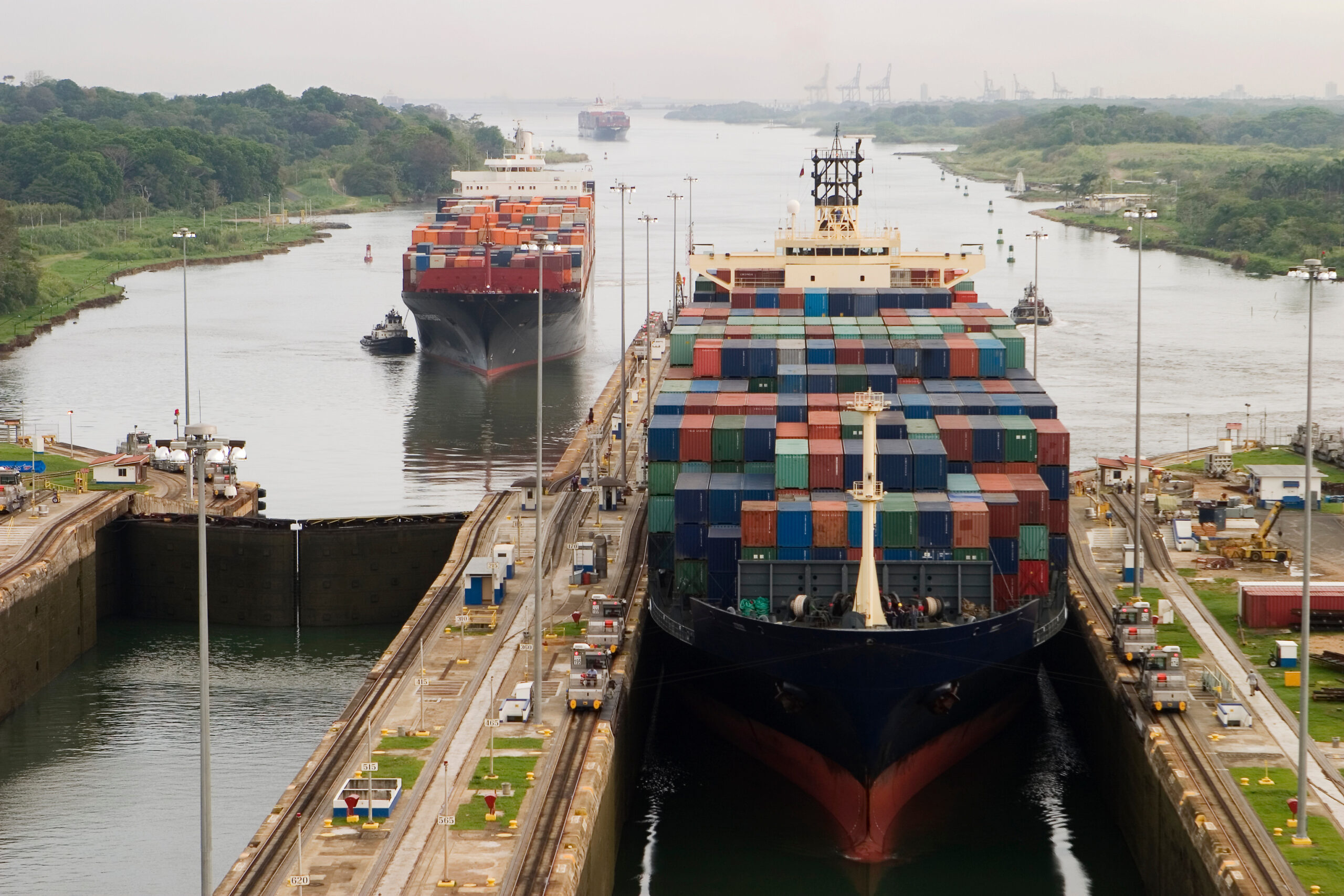With 109 years of operation, the Panama Canal has recorded record numbers in recent years.
Taking advantage of its geographical position, the Canal has modified international trade, saving time, distance, and costs in the maritime transport of finished products and raw materials between different countries since its inauguration on August 15, 1914.
This monumental engineering work connects 180 maritime routes, reaching 1,920 ports in 170 countries worldwide, where approximately 5% of world maritime trade was transited in 2024.
The figures on the Canal
Through its 82 kilometers of length, the Panama Canal connects the Atlantic and Pacific oceans. It has contributed to the Panamanian economy of US$ 20.7 billion during the last 25 years of being in Panamanian hands.
The Panama Canal’s handover to Panama in 1999 significantly boosted the country’s economy. Here’s a breakdown of its contributions:
- Direct economic impact: The Canal generates revenue through tolls paid by ships using the waterway. This income directly contributes to Panama’s government budget.
- Indirect and induced impacts: The Canal’s activity creates a ripple effect throughout the Panamanian economy. It spurs related industries like logistics, shipping services, and canal maintenance, creating jobs and increasing economic activity.
- Expansion project: The major Panama Canal expansion project undertaken between 2007 and 2016 further bolstered the economy. Construction activities created significant demand for materials and labor, stimulating growth.
Furthermore, it delivered a contribution of US$ 2.5 billion to the National Treasury through surpluses, rights per ton of transit, and payment for services provided by the State during fiscal year 2022.
This waterway contributed US$2.5 billion to the treasury for fiscal year 2023, thanks to a budget estimated at US$4,652.0 million.
The impact on the economy of Panama
It can be observed that the Panama Canal significantly impacts the economy of Panama in three main ways:
- As a source of export of services, where the income received comes from the users of the Canal, for this reason, they form part of the economy’s total exports and constitute a fundamental source of essential resources for economic growth, job creation, the flow of investments, the acquisition and adaptation of new technologies and the training of human resources.
- The Panama Canal facilitates various additional economic activities (shipping companies, fuel terminals, etc.)
- It supports other services and export activities in the transit zone (free zones, banks, etc.).
Unleash Your Growth Potential:
Attract Foreign Direct Investment (FDI)
Learn how our proven strategies bring international capital to your organization. Schedule a free consultation today to discuss your unique needs and discover how we can unlock your growth potential.
Facts about the Panama Canal
The first ship to cross the Panama Canal was the American ship Ancón in 1914. Its passage meant the official opening of the maritime Canal.
Fifty-six thousand three hundred and seven workers participated in the construction of the Canal, the majority coming from the Antilles, Europe, and North America. In the excavation, around 270,000 cubic yards of earth were extracted, the material used to build the Amador military fort, the town of Balboa, and the breakwater on Naos Island.
The cost of the canal toll depends on the weight of the boat and the number of passengers. The cheapest toll was paid in 1928 by Richard Halliburton, the only man to swim across the 49 miles (80 kilometers) of the Canal. The feat took him 14 days. He paid 36 cents on the dollar, equivalent to his 63 kilos of weight.
On average, it takes a ship between 8 and 10 hours to pass through the Panama Canal. First, the ship waits its turn at the entrance and then enters until it stops through the locks that use the force of gravity to fill and empty themselves with fresh water, thus allowing ships to pass through the isthmus.
The Panama Canal is a route some cruise chains offer between September and April. The crossing allows travelers to observe the operation of the Canal. They can observe the hydraulic locks that lift the boat, descend, and continue sailing through this magnificent architectural work that drives the economy of Panama.
What’s Coming
In addition to the initiatives for a new water resource management system, in 2023, the Panama Canal was committed to maintenance programs, which include infrastructure such as the Panamax locks that have been operating for more than 100 years, as well as floating equipment, such as tugboats that support the daily operation of the Canal.
Furthermore, in the future, the Canal anticipates focusing on increasing its organizational agility and moving toward new, improved, and digitized processes. These changes will bring greater operational efficiency at all levels.
Indeed, the development of the Canal goes hand in hand with the development of the country’s imports and exports and the economy of Panama.
In conclusion, the Panama Canal is a testament to human ingenuity and engineering prowess. It transcends its role as a mere waterway to become a linchpin of global trade and a cornerstone of Panama’s economy. With over a century of operation, it continues facilitating the flow of goods and services between the Atlantic and Pacific oceans, driving economic growth, job creation, and technological advancement within Panama and beyond. As the Canal embraces modernization initiatives and commits to maintenance programs, it positions itself for continued relevance and efficiency in the ever-evolving landscape of international commerce. The Panama Canal’s journey undoubtedly mirrors Panama’s, intertwined with the nation’s past, present, and future aspirations for prosperity and development.
Don't Miss Out: Limited Spots Available for Free FDI Strategy Sessions
Foreign Direct Investment can fuel your organization's success. But competition is fierce. Secure your spot today for a free, no-obligation consultation with our FDI experts. Learn how to attract global investment and take your business to the next level.


